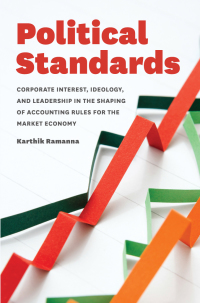Question
The Terminus Hotel, a 200-room facility located in a medieval city in Southern Spain. As consequence of poor management and old-fashioned interior design, the hotel
The Terminus Hotel, a 200-room facility located in a medieval city in Southern Spain. As consequence of poor management and old-fashioned interior design, the hotel experienced slumping demand since 2001. In 2004, the hotel was on the brink of bankruptcy. All of a sudden, these dark prospects turned into hopeful ones; the hotel was located in a historic building and the regional authorities approached Mr. Leo D. Marcial, chair of the Chamber of Commerce, to mobilize local entrepreneurs in order to take over hotel ownership. After some discussions, the entrepreneurs agreed on bidding for the hotel to make it an exclusive, high profile and properly-managed facility. The entrepreneurs regarded the acquisition of the Terminus Hotel as an opportunity to enter the hospitality industry under convenient conditions; they could get a first-rate brand at a relatively cheap price. In January 2007, the new ownership completed thorough refurbishing of the facility, which comprised new furniture and state-of-the-art interior design. The hotel resumed operations in February 2007 (see Table 1)
The new Terminus Hotel offered three main services: accommodation, a restaurant and entertainment. The restaurant served haute cuisine designed and prepared by the team of a worldclass chef, whilst entertainment consisted of flamenco singing and dancing. Restaurant and entertainment services were open to non-clients. In their own firms, the entrepreneurs had spare capacity in a number of support services. In a winwin move, allied firms supplied the hotel with full service in areas such as accounting, law, financing, advertising, gardening, receivables and the reservation center. The transfer prices for these transactions were below market prices (see Table 2).

SERVICE PROFITABILITY ANALYSIS
Although the business plan of the hotel forecasted losses for 2007, actual results were below expectations. In order to identify sources of problems, the entrepreneurs requested a profitability analysis for the three main services offered by the hotel. Cristina Aranda, the cost analyst of one of the allied firms and the person in charge of budget and control for the Terminus Hotel, teamed up with General Manager Claudia Santander to identify some cost categories (see Table 3).

Additionally, Cristina calculated the operating profit for each of the main services offered by the Terminus Hotel (see Table 4).

Furthermore, Cristina and Claudia gathered the following data about each of the services (see Table 5). This data excludes the support activities shown above:

Drawing on current practices in her firm, a pottery, Cristina allocated 100% of common costs to services using a number of employees as single cost allocation base. In order to generate alternative calculations, Cristina also prepared an allocation of all common costs using total revenues as single cost allocation basis. Claudia objected to both calculations. In her opinion, single cost allocations resulted in simplistic calculations that were unrealistic for decision-making purposes. As Claudia argued that the complexity of hotel services could only be captured by using multiple cost allocations, she prepared the following proposal (Table 6):

REQUIREMENT: Using Claudias multiple cost allocation bases, report services profitability. Comment on the rationale of the proposal. 1 PARAGRAPH
TABLE 1 THE TERMINUS HOTEL ASSETS (IN EUROS) (DECEMBER 31, 2007) 2007 2004 ASSETS Goodwill Other intangible assets Investment property Property, plant and equipment Financial assets available for sale Trade and other receivables Deferred tax assets Non-current assets 35,000 55,000 9,400 6,250,000 95,000 90,000 12,600 6,547,000 40,000 25,000 10,000 2,570,000 75,000 175,000 90,000 2.985,000 = Inventories Financial assets available for sale Trade and other receivables Derivative financial instruments Cash and cash equivalents Assets held for sale 56,000 15,000 875,000 95,000 1,655,000 1,375,000 104,500 22.500 1,150,000 117,000 2,233,000 119,000 Current assets 4,071,000 3,746,000 TABLE 2 SERVICES PROVIDED TO THE TERMINUS HOTEL BY ALLIED FIRMS (IN EUROS) Service 2007 Law Financing Accounting and Taxation Advertising Gardening Reservation Center Receivables TOTAL 55,000 85,000 55,000 320,000 20,000 35,000 30,000 600,000 TABLE 3 COMMON Costs FOR ACCOMMODATION, RESTAURANT AND ENTERTAINMENT (EUROS) Service 2007 17 General Management Administrative Support Housekeeping Laundry Security Maintenance TOTAL 55,000 15,000 95,000 325,000 100,000 110,000 700,000 TABLE4 OPERATING PROFIT FOR ACCOMMODATION, RESTAURANT AND ENTERTAINMENT SERVICES Revenues Operating Expenses Accommodation 4,500,000 4,110,000 Restaurant 2,650,000 2,475,000 Entertainment 1,350,000 1,400,000 21 IE Business School THE TERMINUS HOTEL (A) CG1-130-A-1 Operating Profit 390,000 175,000 (50,000) TABLE 5 DATA ABOUT ACCOMMODATION, RESTAURANT AND ENTERTAINMENT Employees Compensation of employees Square meters Daily occupancy (average) Property, plant and equipment (Net of depreciation) Accommodation 12 350,000 5,000 m2 75 rooms Restaurant 16 500,000 200 m2 40 tables Entertainment 12 250,000 300 m2 30 tables 5,200,000 475,000 325,000 TABLE 6 ALLOCATING COMMON COSTS BY USING MULTIPLE COST ALLOCATION BASES Cost allocation basis Value of property, plant and equipment Number of employees Common cost Financing, Maintenance Accounting and Taxation, Reservation Center, Advertising, Law, General Management, Admin. Gardening, Housekeeping, Security Receivables, Laundry Number of square meters RevenuesStep by Step Solution
There are 3 Steps involved in it
Step: 1

Get Instant Access to Expert-Tailored Solutions
See step-by-step solutions with expert insights and AI powered tools for academic success
Step: 2

Step: 3

Ace Your Homework with AI
Get the answers you need in no time with our AI-driven, step-by-step assistance
Get Started


